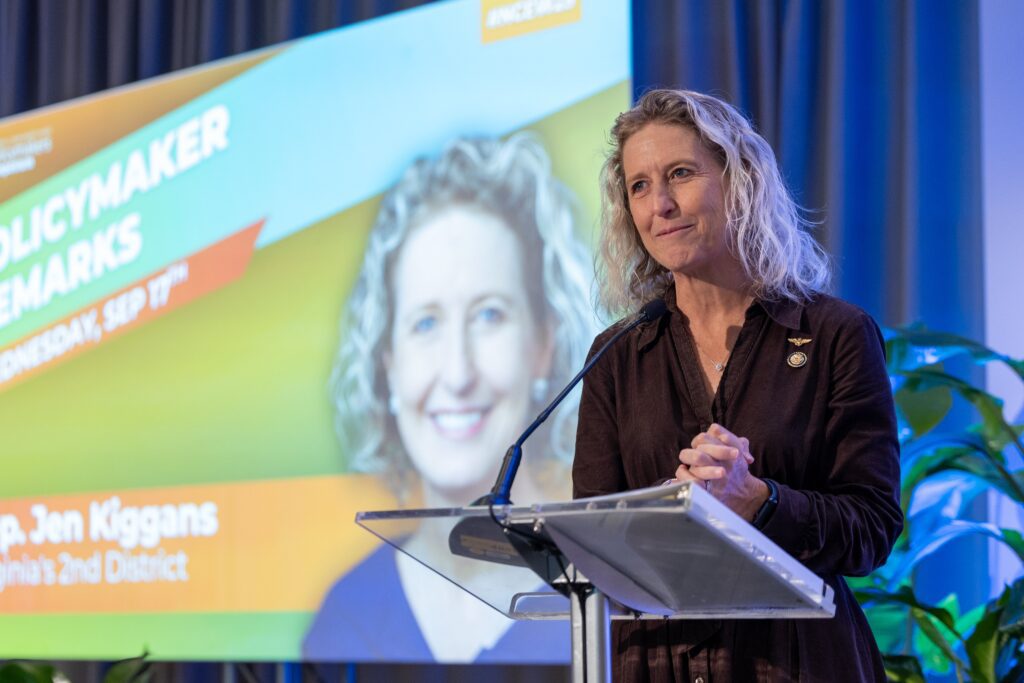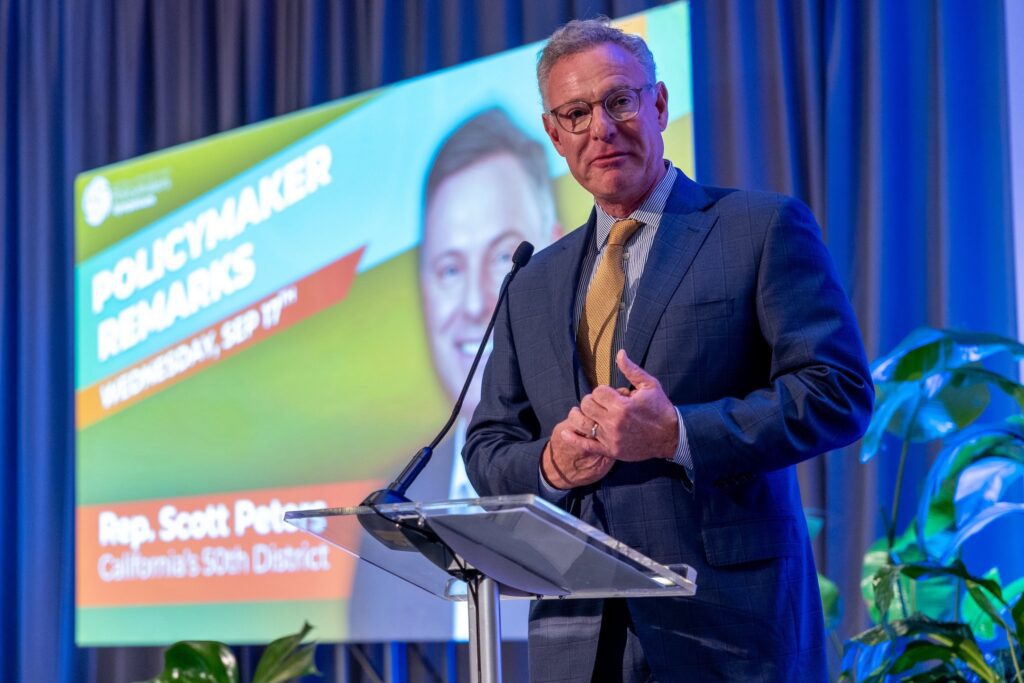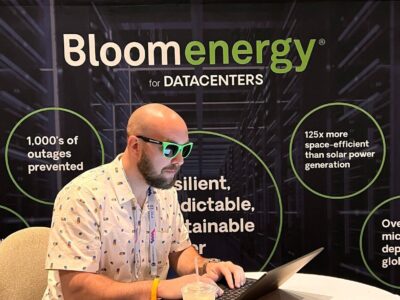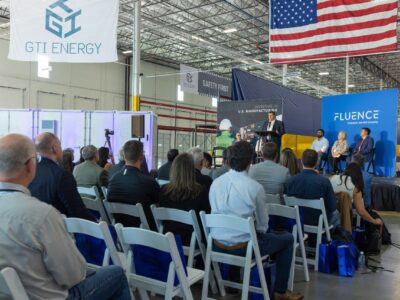“I can remember a time when energy wasn’t necessarily political,” U.S. Sen. Lisa Murkowski (R-AK) said, opening National Clean Energy Week last month. “The reality that we’re facing right now is this is not necessarily the happiest year on record for clean energy. You’ve got some headwinds that you’re facing,” she reflected on the uncertainty facing the industry.
And yet, Sen. Murkowski expressed optimism and pointed out reasons for hope: “What I’m here to assure you is that it will get better. It will get better. And the reason I’m so confident of that is just looking at at the fundamentals, the cold, hard facts of new industries that are emerging to create more demand for electricity than ever, ever before; of a strained grid, where reliability can only be protected if we build out more of everything that we have, and we do it as fast as we can; and, rapidly rising electricity prices. The solution to all of this is more power.” Taking resources off the table, whether they be fossil fuels or clean energy, is simply a bad idea, she argued.
Sen. Murkowski pointed to a report from the Federal Energy Regulatory Commission (FERC), which found that solar accounted for 77.7% of the capacity added to the grid; when combined with wind, renewables accounted for nearly 96% of the new sources of generation in 2025. The reason for the trend, she explained, is the enormous opportunity in the clean energy market: “The federal opportunity on the clean energy side may be diminished right now, but the market opportunity is massive. Even with less federal support, what clean energy can tap into is virtually unparalleled.”

Photo Courtesy Lisa Murkowski
Sen. Murkowski was not the only legislator to advocate for an all-of-the-above approach at NCEW. U.S. Sen. John Curtis (R-UT) explained, “We’re now in a world where we need every electron we can get, and we’re not quite sure where we’re going to get all of our electrons and where they’re going to come from.” That was why it was so easy for him to support clean energy credits during the budget reconciliation process, he remembered. U.S. Rep. Bob Latta (R-OH-8) noted that global electricity demand is surging due to the growing use of data centers. He said that Regional Transmission Organizations (RTOs) and Independent System Operators (ISOs) have all told him, “We’ve got to have more power,” and “We cannot take any generation offline that we have right now.” He reflected on the country’s trajectory, starting in 2008 when House Republicans promoted an “all-of-the-above” energy strategy to reduce reliance on foreign oil and gas, which ultimately led the country to become the world’s number one natural gas producer. He summarized, “We have great things that can happen in this country. So, it’s using everything we have at our disposal so we make sure we’re on top.”
U.S. Rep. Buddy Carter (R-GA-01) added that his state’s energy needs have resulted in a diverse energy mix: “Because Georgia has been the number one state in which to do business for eleven years in a row, we need every electron we can get, and that’s why I believe in an all-of-the-above energy strategy.” He shared estimates that in the next decade, the state will need about 9,500 more megawatts (MW) of power, or two more Plant Vogtles, which is already the country’s largest supplier of clean energy. Tapping into clean, reliable energy is the state’s solution to prepare for the future and remain a top business hub.
U.S. Rep. Marc Veasey (D-TX-33) noted that there is room for a state like Texas, which is known for its oil and gas, to lead in other energy forms, as well: “I’m very proud to be a Texan, because I think that we probably do all-of-the-above better than anyone else.” For example, the state is a dominant player in the wind industry and a leader in solar energy. Meanwhile, U.S. Rep. Jen Kiggans (R-VA-02) reflected on the importance of state support for clean energy. She said that she loves being from the Commonwealth of Virginia “because I’ve got a great governor who is also on board with this all-of-the-above energy approach, and he’s really set the stage for us and allowed us really a safe space to be all-of-the-above energy champions, from nuclear small modular reactors… to geothermal and traditional forms of energy.”

Photo Courtesy National Clean Energy Week
As for the role of the federal government, U.S. Rep. Tim Walberg (R-MI-07) discussed the importance of Congressional support for clean energy: “As we continue our work in Washington, we must remain laser-focused on strengthening the energy capacity of our country by promoting an all of above energy approach and unleashing American energy production.” At the same time, U.S. Rep. Susie Lee (D-NV-03) said that the government should allow the free market to play out: “We need to make sure we’re doing everything to not pick winners or leave losers. It shouldn’t be Washington that is making these decisions on what investments should be made. It should be investors.”
U.S. Rep. Scott Peters (D-CA-50) concurred that as a country, we should move beyond relying solely on oil and gas and “truly invest in an all-of-the-above energy strategy that looks to the future instead of clinging to the past.” The country should “invest in all forms of energy, build transmission, get out of our own way, and honor the rights and expectations of our private investor partners,” he detailed. U.S. Rep. Juan Ciscomani (R-AZ-06) simplified, “We have to be supporting every form out there.”

Photo Courtesy National Clean Energy Week
Multiple leaders pointed out that clean energy has broad bipartisan support. Rep. Ciscomani stated that his district is one-third Republican, one-third Democratic, and one-third Independent, and “I call it a district where good ideas win, and this is what we’re working on here is one of those good ideas.” He advocated for Congressional Republicans to step up and lead on these issues by working with both public and private partners. As Sen. Murkowski said, “Americans, including Republicans, broadly support clean energy.”
Both parties have changed their tune over the years, according to Sen. Curtis. He reminisced on a time when Democrats did not want to admit that the country needed nuclear power, and Republicans did not want to discuss climate. Now, he pointed out, “I think there’s about 85 in the House Republicans that are pretty comfortable talking about climate.”
Rep. Walberg used his state as a specific example of what can happen when there is bipartisan collaboration. After the 2022 closure of the Palisades Nuclear Plant in Michigan caused an adverse economic impact of more than $250 million, “a bipartisan group of Congressional leaders came together to request the funding necessary to reopen the plant, and the Trump administration continues to pave the way for the plant’s awaited restart.” It will generate more than 800 MW of energy, enough to power approximately 800,000 homes, and create 600 jobs in the area.
Rep. Lee concurred, “I think we have to remember that there are members of Congress who are committed to working across the aisle, and that it doesn’t matter if you represent a blue state or a red state, a rural community or an urban community – we all understand our needs, and it’s going to require all of us to put the hatchets down a little bit and work together.” Sen. Curtis summarized, “We need to figure out how to keep the politics out of it.”

Photo Courtesy National Clean Energy Week
U.S. Sen. Murkowski concluded that the incredible demand for energy should cause all of us, across the aisle, to stretch our imaginations as to what is next: “What’s next that’s going to allow us to meet this in a manner that is head-on, demonstrating our resolve, demonstrating our ingenuity in these spaces that we have long led on? And we will continue to lead in all forms of energy, whether they are what we know today or what will be coming tomorrow.”





